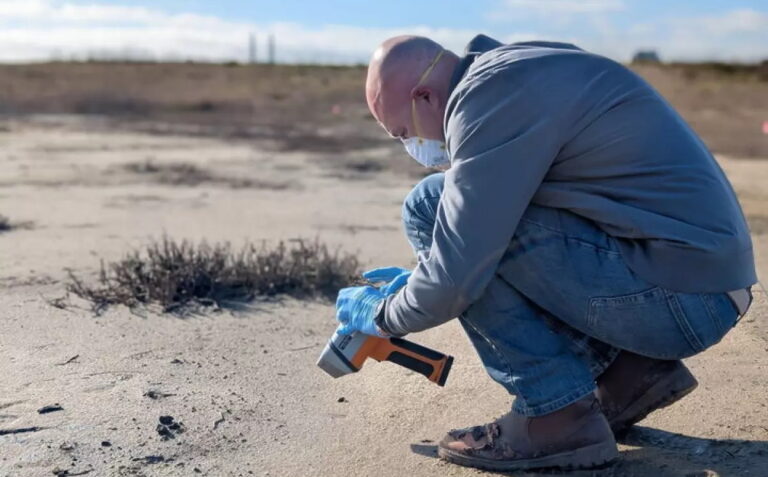Following the Moss Landing battery facility fire, Professor Ivano Aiello conducted groundbreaking research uncovering significantly elevated levels of heavy metals (such as nickel, manganese, and cobalt) in the nearby Elkhorn Slough Reserve. His findings sparked widespread attention from national and regional media, highlighting both the environmental impact of the fire and the importance of continued monitoring and research. Below are selected stories from major outlets that covered this work.
Scientists at San Jose State University say that a large fire that burned at a battery plant in Monterrey County, California earlier this month has left heightened levels of heavy metals in a nearby nature reserve.
Elevated concentrations of heavy metals have been detected at the Elkhorn Slough Reserve by scientists from San Jose State University's Moss Landing Marine Laboratories following a recent fire at Vistra Moss Landing Power Plant and Energy Storage Facility.
“Three elements, in particular, were very, very high,” said Ivano Aiello, professor and chair of San Jose State University’s Moss Landing Marine Laboratories, who has been studying Elkhorn Slough Reserve for more than a decade. The concentrations of manganese, cobalt and nickel were hundreds to a thousand times higher than previous measurements.
Scientists at San José State University recorded a dramatic increase in nickel, manganese and cobalt — materials used in lithium ion batteries — in soil samples at the Elkhorn Slough Reserve after the recent fire at the nearby Moss Landing Power Plant
One day after a group of Santa Cruz County residents collected soil samples from the areas impacted by the Jan. 16 battery storage facility fire at the Moss Landing Power Plant to test for heavy metals, a San Jose State University Professor released the results of a study confirming their suspicions. The study of a two-mile radius around the plant by Professor
Ivano Aiello found an “unusually high concentrations of heavy-metal nanoparticles in marsh soils at Elkhorn Slough Reserve “after the fire,” with increases of a hundredfold to a thousandfold from previous testing.
Dr. Ivano Aiello, the chair of San José State’s Moss Landing Marine Laboratories, said after the fire, his lab tested the soil in a 2-mile radius of the plant, which is near the Elkhorn Slough estuary. After taking multiple measurements from about 100 locations, his lab observed a hundreds-fold rise in the concentration of the three toxic heavy metals along the top layer of the soil.
“Those three metals are toxic,” said Ivano Aiello, a marine geology professor at Moss Landing Marine Labs, who led the soils testing. “They are hazardous to aquatic life. We want to understand how they will move and interact with the environment, whether they will make it through the food web and at what level — from microbes to sea otters.”
Research scientists at San Jose State University’s Moss Landing Marine Laboratories detected “unusually high” concentrations of heavy-metals microscopic particles in marsh soils, including nickel, cobalt and manganese. Levels were roughly 100 to 1,000 times higher than normal.
Researchers from San Jose State University’s Moss Landing Marine Laboratories found high levels of nickel, manganese and cobalt in soil at the Elkhorn Slough Reserve following the fire that sparked Jan. 16 at a battery storage facility in Moss Landing.


